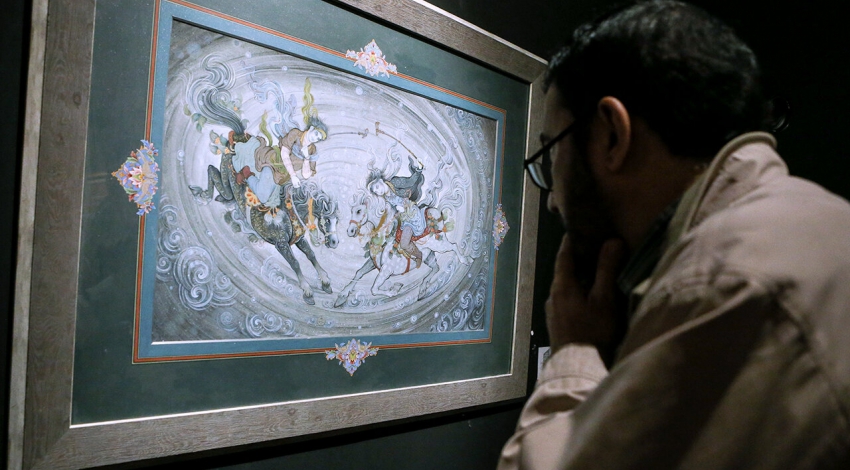Sunday 5 March 2023 - 23:40
Story Code : 404563
Persian painting biennial returns after six-year hiatus
Abdorreza Sohrabi, the director of the Visual Arts Office of the Ministry of Culture and Islamic Guidance, a group of cultural figures and artists came together at the Saba Art and Cultural Institute in Tehran to attend the opening ceremony of the exhibition.
Over 200 works in different fields of Persian painting, including miniature, taz'hib (illumination) and gol-o-morgh, are on view at the biennial, which will run until April 9.
�The 11th edition of the biennial is a special event; despite the unfavorable social conditions and limited space for the exhibition, we held sessions producing positive results, and now we see 221 artworks hanging on the wall,� Sohrabi during the opening ceremony of the biennial.
He said that a number of the works were previously on display at the 15th Fajr Festival of Visual Arts, which was held in February.
�However, 90 percent of the works have been produced exclusively for the biennial. In addition, we believe that events such as the National Biennial of Persian Painting may help the Fajr festival improve its capacity,� Sohrabi noted.
He referred to the culture ministry�s high regard for the art market and said, �The Visual Arts Office has established a council to support art justice by buying artworks from artists, especially from those artists working in remote regions and deprived areas.�
The biennial also plans to organize several sessions, during which academics will present their latest articles on contemporary Persian painting and several other topics.
During its meeting in December 2020, UNESCO�s Intergovernmental Committee for the Safeguarding of the Intangible Cultural Heritage inscribed the art of miniature as a common item between Iran, Azerbaijan, Turkey and Uzbekistan on the Representative List of the Intangible Cultural Heritage of Humanity.
A Persian painting is a two-dimensional artwork that involves the design and creation of small paintings on a book illustration or a separate work of art intended to be kept in an album of such works called a muraqqa.
The techniques are broadly comparable to the Western and Byzantine traditions of miniatures in illuminated manuscripts.
Although there is an equally well-established Persian tradition of wall painting, the survival rate and state of preservation of miniatures are better, and miniatures are a much better-known form of Persian painting in the West. Many of the most important examples of this art form are in Western, or Turkish museums.
Persian painting became a significant Iranian genre during the 13th century, receiving Chinese influence after the Mongol conquests, and the highest point in the tradition was reached in the 15th and 16th centuries.
Persian painting was the dominant influence on other Islamic miniature traditions, principally the Ottoman miniature in Turkiye, and the Mughal miniature in the Indian subcontinent.
By TEHRAN TIMES�
# Tags











